 Asayu is a very new, Awaji Island-based Japanese company (from 2020) releasing traditional incenses catering to a modern audience. The lion’s share of their catalog so far appears to be low smoke incenses dependent more on perfume mixes than their bases, but most of their aromas still seem to fall around traditional Japanese scents rather than the sorts of diversions you might see in Nippon Kodo or Shoyeido catalogs. I was reminded a lot of Daihatsu’s incenses in terms of the strengths of the scents, but also because the perfume mixes in these often feel quite natural and higher quality than you usually see at cheaper prices. Another thing I found interesting about the two pairs that I was sent for review, both are intriguingly different scents paired together, although from a quick glance you can certainly move to single boxes of the scents if you only prefer one and wish to repurchase. I have linked to both the sets and the single boxes in the reviews below.
Asayu is a very new, Awaji Island-based Japanese company (from 2020) releasing traditional incenses catering to a modern audience. The lion’s share of their catalog so far appears to be low smoke incenses dependent more on perfume mixes than their bases, but most of their aromas still seem to fall around traditional Japanese scents rather than the sorts of diversions you might see in Nippon Kodo or Shoyeido catalogs. I was reminded a lot of Daihatsu’s incenses in terms of the strengths of the scents, but also because the perfume mixes in these often feel quite natural and higher quality than you usually see at cheaper prices. Another thing I found interesting about the two pairs that I was sent for review, both are intriguingly different scents paired together, although from a quick glance you can certainly move to single boxes of the scents if you only prefer one and wish to repurchase. I have linked to both the sets and the single boxes in the reviews below.
 In fact, the first scent in the Temple Incense Set, Sandalwood & Plum, is a very traditional merging of sandalwood and plum (blossom). Start with something like Baieido’s Kobunboku or Shoeyido’s Baika-Ju for references, but then maybe imagine if Daihatsu were to take a similar shot at a plum blossom incense. But where these traditional scents seem to imply the plum blossom by a mix of other ingredients, Asayu’s stick really has a plum scent cut through the base in a much more striking way, as if it were created specifically from perfume. This brings it a bit closer to a modern rather than a traditional but since I can’t think of any other incense off the top of my head that does this, it carves a bit of a new space of its own. It’s interesting as well because different spaces will likely contour the scent a bit differently, in one place I felt that blossom part to be stronger than the base, in another it merged quite nicely. The sandalwood is quite noticeable as part of the overall blend as well, although I would imagine it’s modeled more on non-Mysore level sources. It is perhaps the conundrum today that disappearing sandalwood sources are certainly having a dance with increasing prices and so I can only say that one might want to make the judgement call on their own as to whether the price does or does not justify the types of notes you won’t get in rarer Mysore sourced woods, but a lot of these sort of standard traditionals do not feature that (even Kobunboku, I think, has shifted on this account). Whatever the case it’s certainly a pleasant scent and had me sampling several sticks trying to feel where it would land. However, it has to be noted that the Kobunboku is still strikingly more inexpensive and quite a bit more complex, while the Asayu will turn up the volume and scent a larger space. And while the Kobunboku tends to weave a plum blossom scent out of its various ingredients, the Asayu is much more forward about it, even actually getting to some fruitier levels of the plum that the Kobunboku doesn’t touch. So while they are in the same class of scent, they are quite different incenses. My only caveat on this one is that there’s something at the edge of the plum that finishes in a way that’s a touch sharp, but I’m guessing this is something you’d notice more close up.
In fact, the first scent in the Temple Incense Set, Sandalwood & Plum, is a very traditional merging of sandalwood and plum (blossom). Start with something like Baieido’s Kobunboku or Shoeyido’s Baika-Ju for references, but then maybe imagine if Daihatsu were to take a similar shot at a plum blossom incense. But where these traditional scents seem to imply the plum blossom by a mix of other ingredients, Asayu’s stick really has a plum scent cut through the base in a much more striking way, as if it were created specifically from perfume. This brings it a bit closer to a modern rather than a traditional but since I can’t think of any other incense off the top of my head that does this, it carves a bit of a new space of its own. It’s interesting as well because different spaces will likely contour the scent a bit differently, in one place I felt that blossom part to be stronger than the base, in another it merged quite nicely. The sandalwood is quite noticeable as part of the overall blend as well, although I would imagine it’s modeled more on non-Mysore level sources. It is perhaps the conundrum today that disappearing sandalwood sources are certainly having a dance with increasing prices and so I can only say that one might want to make the judgement call on their own as to whether the price does or does not justify the types of notes you won’t get in rarer Mysore sourced woods, but a lot of these sort of standard traditionals do not feature that (even Kobunboku, I think, has shifted on this account). Whatever the case it’s certainly a pleasant scent and had me sampling several sticks trying to feel where it would land. However, it has to be noted that the Kobunboku is still strikingly more inexpensive and quite a bit more complex, while the Asayu will turn up the volume and scent a larger space. And while the Kobunboku tends to weave a plum blossom scent out of its various ingredients, the Asayu is much more forward about it, even actually getting to some fruitier levels of the plum that the Kobunboku doesn’t touch. So while they are in the same class of scent, they are quite different incenses. My only caveat on this one is that there’s something at the edge of the plum that finishes in a way that’s a touch sharp, but I’m guessing this is something you’d notice more close up.
 And where the previous scent really brings up the issues of sandalwood, certainly an incense called Premium Aloeswood will do the same for that much rarer of woods. Suffice it to say that if you’re looking for traditional, resin heavy sorts of aloeswood scents you’re not likely to find that here, instead it actually reminds me a little of what the Vedic companies are doing with their oud incenses, which is basically to take aspects of spice and wood that you would find as sub-elements in a scent like this and make those the actual features. So while this doesn’t really strike me as all that much of a traditional aloeswood, it is still a really nice incense, one I liked right away, perhaps something more like a sandalwood/aloeswood-like mix with all sorts of nice, spicy top notes. In a way I think this is often when perfumed incenses really succeed because they can lift those spicy notes and intensify them and I like the way that sort of cinnamon-clove top spice really comes out on this. What is particularly nice is this stays dry enough to not feel like it’s as much of a cologne scent (which is certainly what you get with Vedic oud charcoals). OK and I take it back a bit, while this doesn’t have premium level resin notes, there are definitely some resin-like characteristics in the very background, but you have to concentrate a bit to suss them out. I kind of loved how by my second stick I realized that were some really complex things going on with this incense. It has an invigorating fresh wood scent about it that is quite attractive.
And where the previous scent really brings up the issues of sandalwood, certainly an incense called Premium Aloeswood will do the same for that much rarer of woods. Suffice it to say that if you’re looking for traditional, resin heavy sorts of aloeswood scents you’re not likely to find that here, instead it actually reminds me a little of what the Vedic companies are doing with their oud incenses, which is basically to take aspects of spice and wood that you would find as sub-elements in a scent like this and make those the actual features. So while this doesn’t really strike me as all that much of a traditional aloeswood, it is still a really nice incense, one I liked right away, perhaps something more like a sandalwood/aloeswood-like mix with all sorts of nice, spicy top notes. In a way I think this is often when perfumed incenses really succeed because they can lift those spicy notes and intensify them and I like the way that sort of cinnamon-clove top spice really comes out on this. What is particularly nice is this stays dry enough to not feel like it’s as much of a cologne scent (which is certainly what you get with Vedic oud charcoals). OK and I take it back a bit, while this doesn’t have premium level resin notes, there are definitely some resin-like characteristics in the very background, but you have to concentrate a bit to suss them out. I kind of loved how by my second stick I realized that were some really complex things going on with this incense. It has an invigorating fresh wood scent about it that is quite attractive.
 The Purification Set presents a couple of sandalwood blends and honestly you could probably not pair two more different incenses. The Sandalwood & White Sage is a pretty standard sort of sage scent and there’s certainly a very clear white sage oil at work here that has that kind of intriguing sweet middle the better oils usually have (in addition to the food/cooking like aspects) so I think it’s safe or even sage to say that this is a quality variant of the scent. Essentially you will likely already know if you’re going to like this one by how much you already like sage, and I have seen very little on the market from domestic/Native American type smudges and sticks all the way through Indian variations and onto a refined Japanese stick like this that really varies all that much from this central scent. The sandalwood, naturally, can really only be a base and I would think anything expensive would likely be wasted sitting underneath an oil with this kind of strength, so it’s likely more for the format/base of the stick than anything else. So in the end pricewise this is probably pretty high for such a scent, but I certainly can’t think of a better sage incense either. Sitting here in the early morning with it (twice even), it’s quite invigorating and powerful.
The Purification Set presents a couple of sandalwood blends and honestly you could probably not pair two more different incenses. The Sandalwood & White Sage is a pretty standard sort of sage scent and there’s certainly a very clear white sage oil at work here that has that kind of intriguing sweet middle the better oils usually have (in addition to the food/cooking like aspects) so I think it’s safe or even sage to say that this is a quality variant of the scent. Essentially you will likely already know if you’re going to like this one by how much you already like sage, and I have seen very little on the market from domestic/Native American type smudges and sticks all the way through Indian variations and onto a refined Japanese stick like this that really varies all that much from this central scent. The sandalwood, naturally, can really only be a base and I would think anything expensive would likely be wasted sitting underneath an oil with this kind of strength, so it’s likely more for the format/base of the stick than anything else. So in the end pricewise this is probably pretty high for such a scent, but I certainly can’t think of a better sage incense either. Sitting here in the early morning with it (twice even), it’s quite invigorating and powerful.
 Of all these incenses perhaps the most surprising to me was the Sandalwood & Rose. I’ve gone on record a lot of times that rose incenses can be a bit sketchy at inexpensive levels simply because it’s just not usually rose that’s in them. Perfumes and oils, unless they are of the very pricy variety, will not have legitimate rose scents and you’d honestly be hard pressed to find anything that isn’t just craftily created with more inexpensive ingredients. In Indian incenses this often pushes these scents into general florals or even fruitier variants, but with Japanese incenses the problem can be that these incenses can end up being bitter and poor quality. So the surprise here is, well first this is probably not what you’d call an inexpensive rose per se (but…), that this is a really lovely floral incense, it actually reminds me of some of the better Shoyeido Floral World incenses before they were deleted. Part of that is there’s some sort of powdery floral element in play here that is neither rose nor sandalwood, but it’s quite friendly nonetheless and I’ve found it to sneak up on me in some really pleasant and subtle ways that show some solid crafting. Unsurprisingly it’s not going to remind you of so much of actual roses (in the capitol of California here I have walked fairly frequently in a large rose garden at the park, so know exactly what a bunch of them smell like), but it is a nicely balanced floral confection that at least genuflects in that direction and does so without feeling cheap or bitter. It almost feels like there’s a couple of levels, something a bit more herbal on the underside and then the friendly perfume on top. Will you like both of these incenses? Well you might, but they really couldn’t be more different.
Of all these incenses perhaps the most surprising to me was the Sandalwood & Rose. I’ve gone on record a lot of times that rose incenses can be a bit sketchy at inexpensive levels simply because it’s just not usually rose that’s in them. Perfumes and oils, unless they are of the very pricy variety, will not have legitimate rose scents and you’d honestly be hard pressed to find anything that isn’t just craftily created with more inexpensive ingredients. In Indian incenses this often pushes these scents into general florals or even fruitier variants, but with Japanese incenses the problem can be that these incenses can end up being bitter and poor quality. So the surprise here is, well first this is probably not what you’d call an inexpensive rose per se (but…), that this is a really lovely floral incense, it actually reminds me of some of the better Shoyeido Floral World incenses before they were deleted. Part of that is there’s some sort of powdery floral element in play here that is neither rose nor sandalwood, but it’s quite friendly nonetheless and I’ve found it to sneak up on me in some really pleasant and subtle ways that show some solid crafting. Unsurprisingly it’s not going to remind you of so much of actual roses (in the capitol of California here I have walked fairly frequently in a large rose garden at the park, so know exactly what a bunch of them smell like), but it is a nicely balanced floral confection that at least genuflects in that direction and does so without feeling cheap or bitter. It almost feels like there’s a couple of levels, something a bit more herbal on the underside and then the friendly perfume on top. Will you like both of these incenses? Well you might, but they really couldn’t be more different.
In being approached by the company to review, I expressed that I don’t usually go for low smoke incenses (and thus may not be the best person to review them as my enthusiasm is often pre-dampened), but if these four incenses are any indication, Asayu are doing a rather good job at creating quality scents and one can imagine that stretching to their low smoke lines as well. I was also told that for a time, shipping will be free to the US, Canada and United Kingdom out of warehouses in those countries, so it couldn’t be a better time to introduce yourself to this new company. And if you’ve tried and enjoyed any of their low smoke incenses, please feel free to tell us in the comment section!
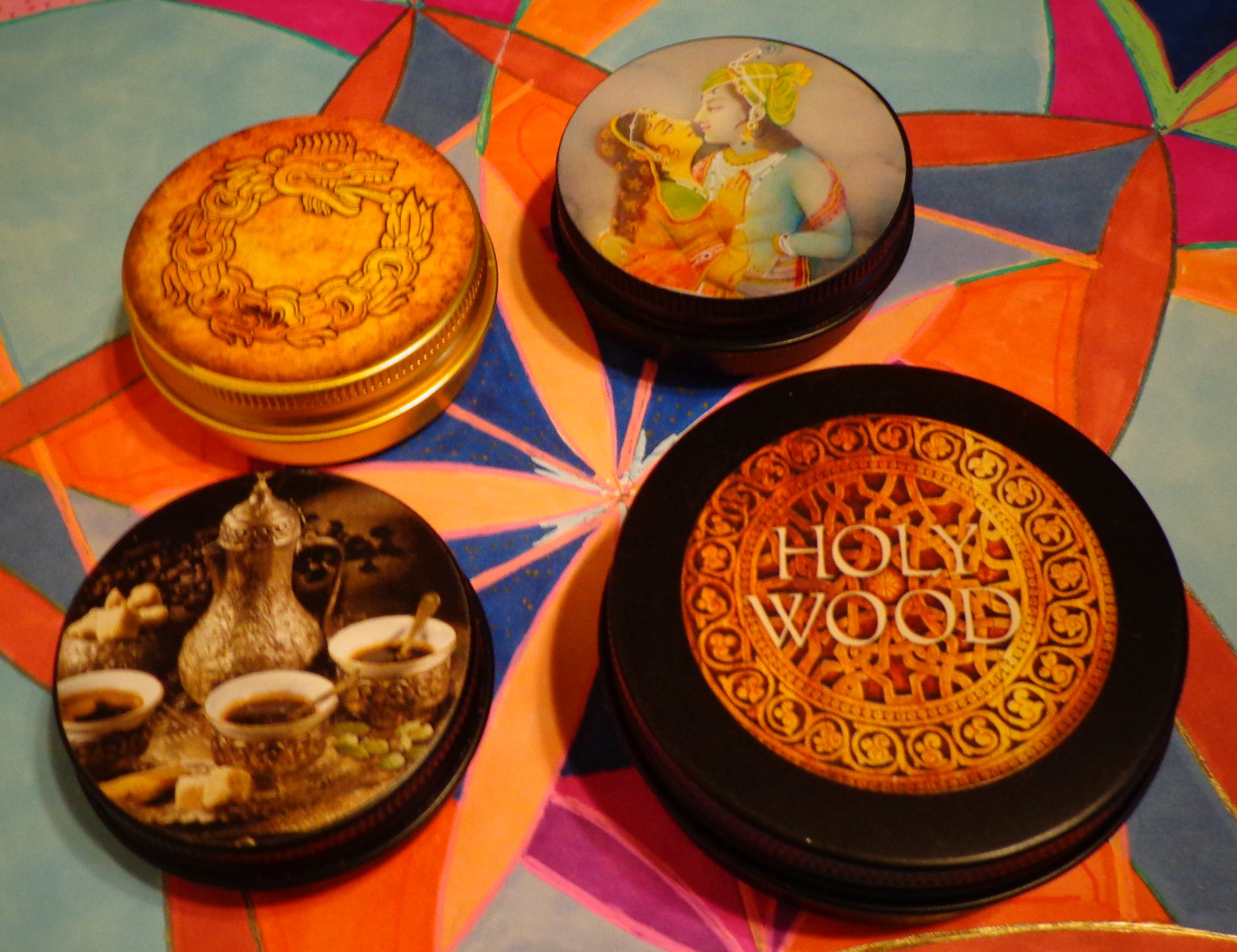 It is particularly difficult in the first half of the year to keep up with the sheer amount of brilliant incense art that both Bonnie Kerr and Katlyn Breene spin out over this period, and it can be hard to get to things before they sell out. Hopefully this guide will be helpful to readers, and there will certainly be a second round up in the (very) near future as Mermade has just released a number of intriguing new scents. The current four I have sat with a bit longer, so I wanted to get my thoughts on them out while you can still go find them.
It is particularly difficult in the first half of the year to keep up with the sheer amount of brilliant incense art that both Bonnie Kerr and Katlyn Breene spin out over this period, and it can be hard to get to things before they sell out. Hopefully this guide will be helpful to readers, and there will certainly be a second round up in the (very) near future as Mermade has just released a number of intriguing new scents. The current four I have sat with a bit longer, so I wanted to get my thoughts on them out while you can still go find them.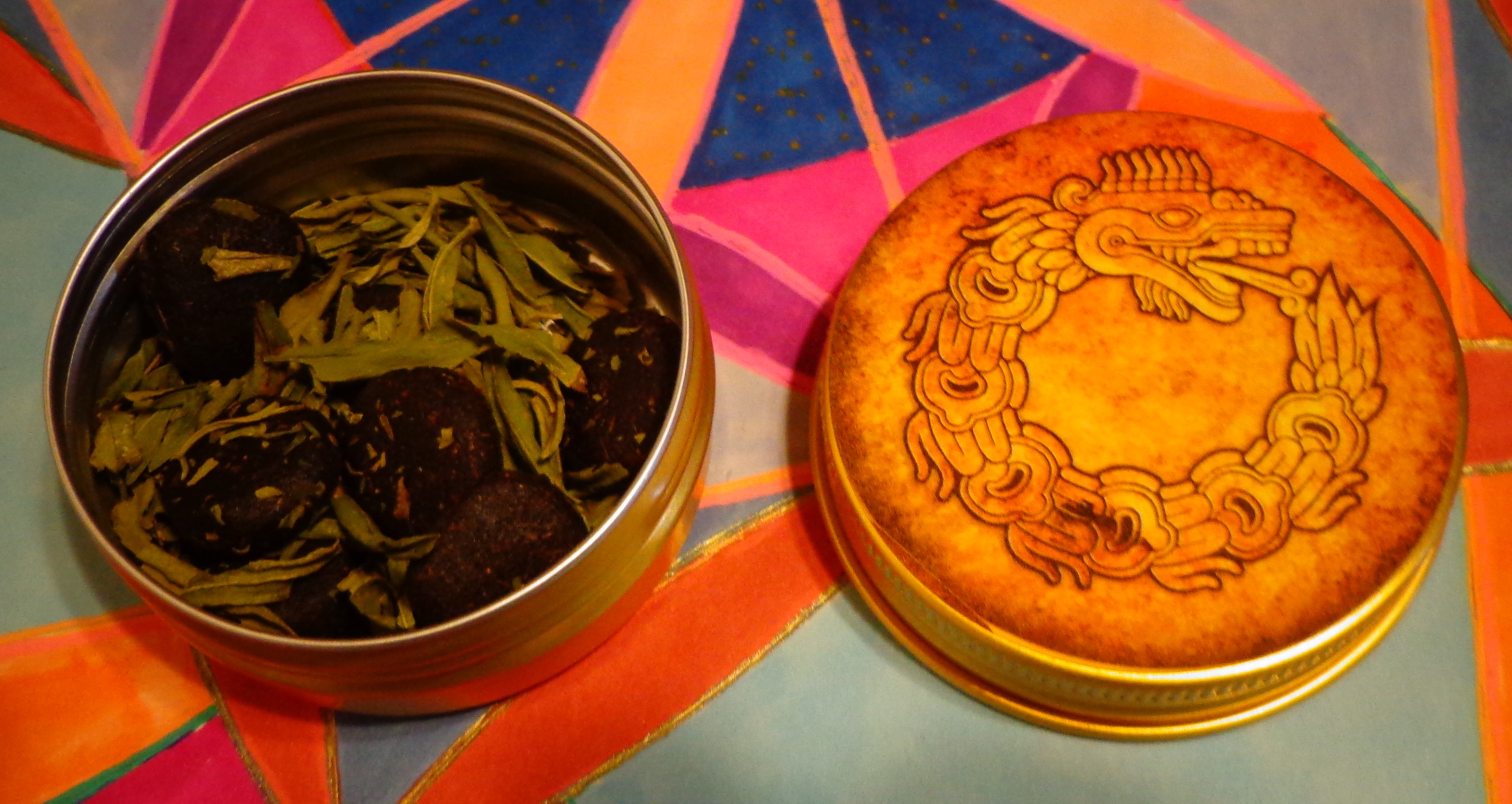
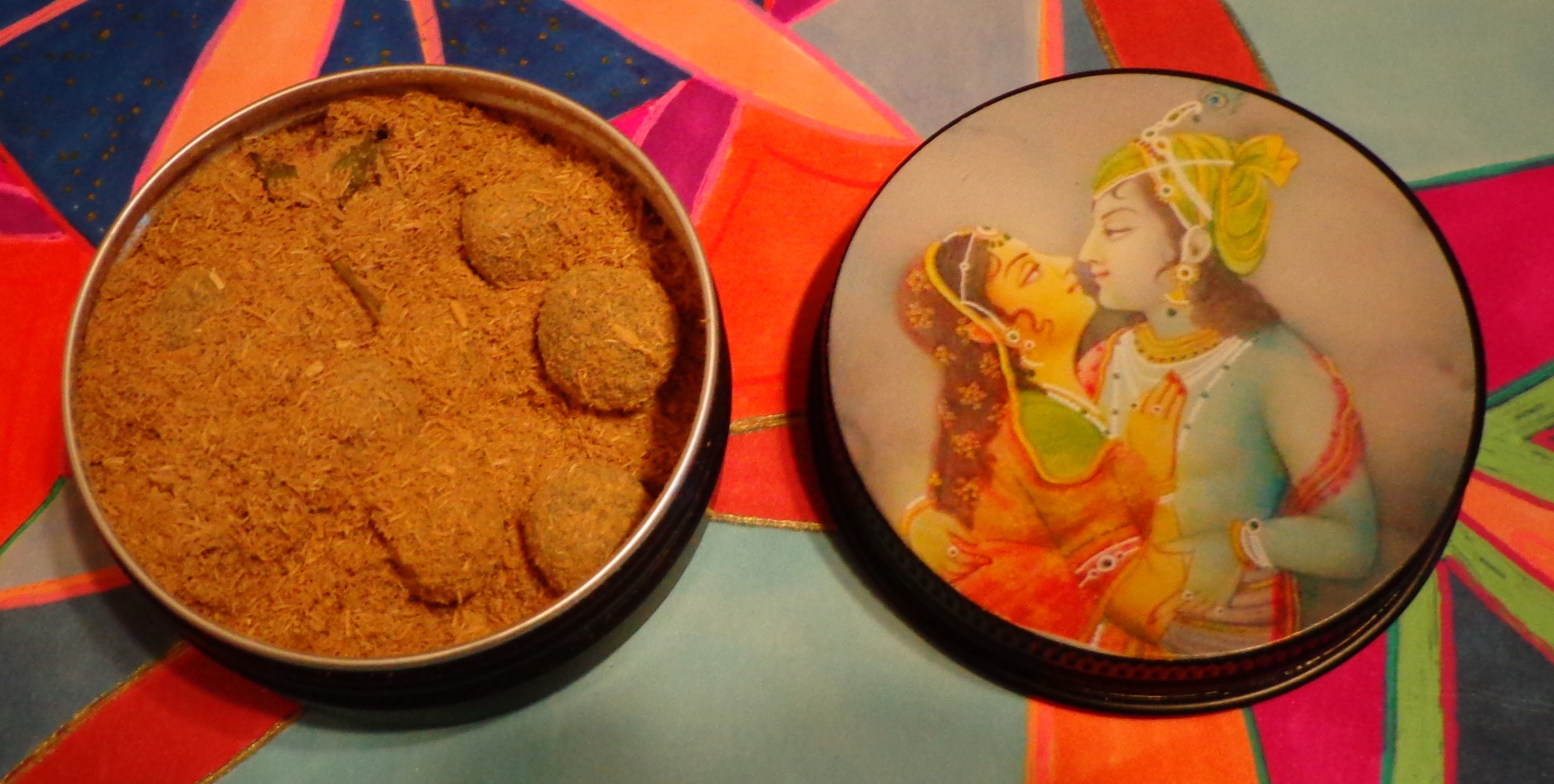
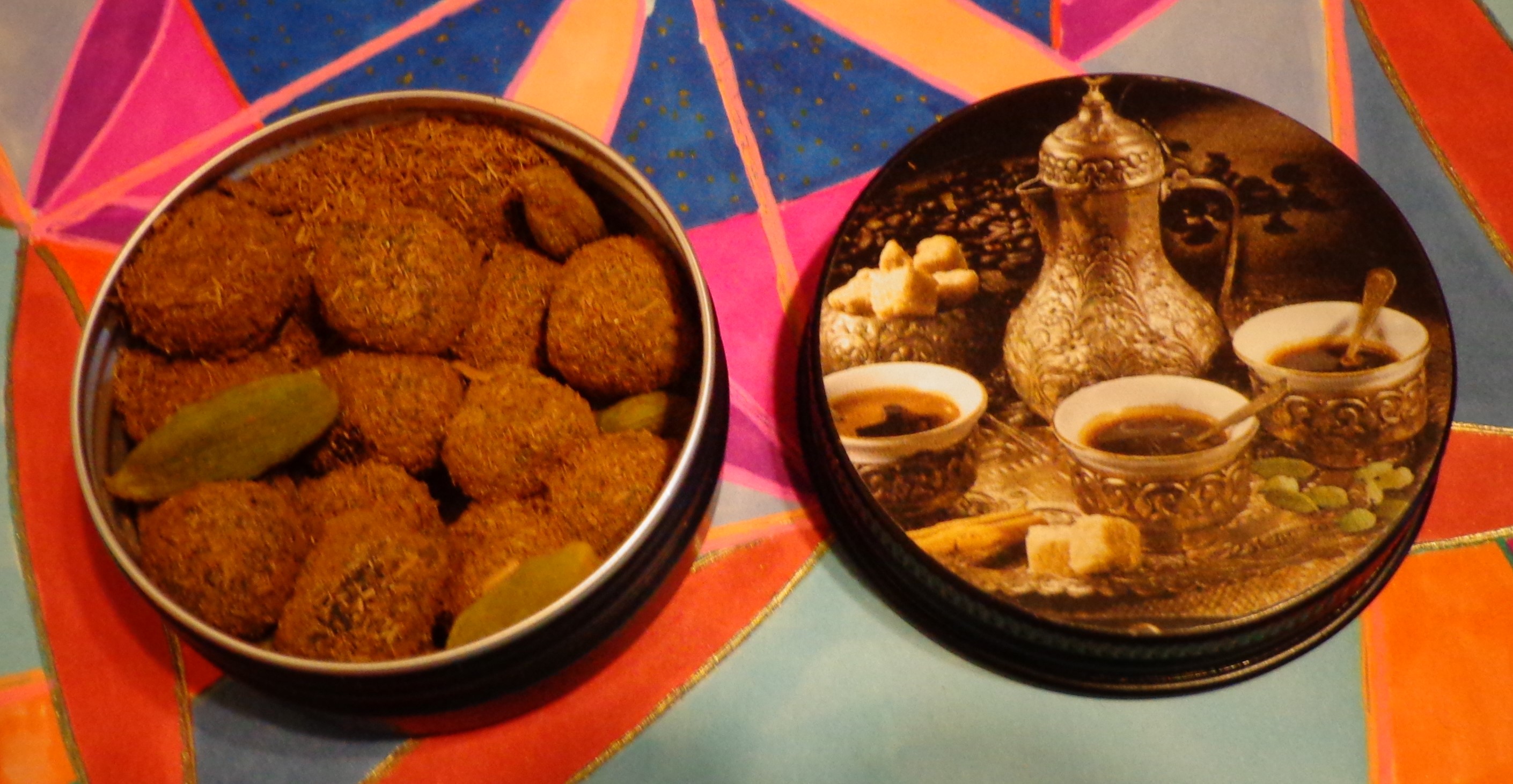
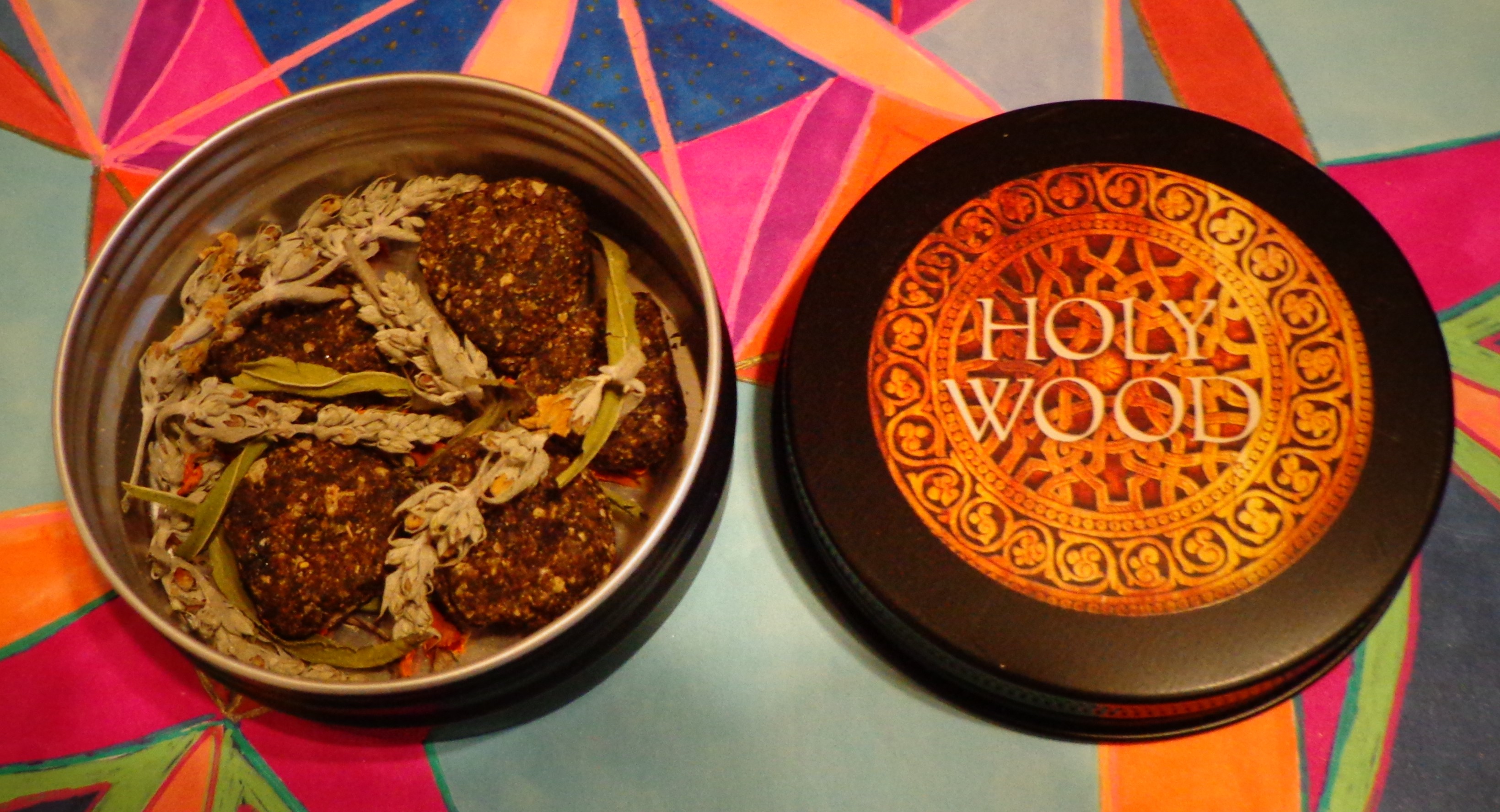
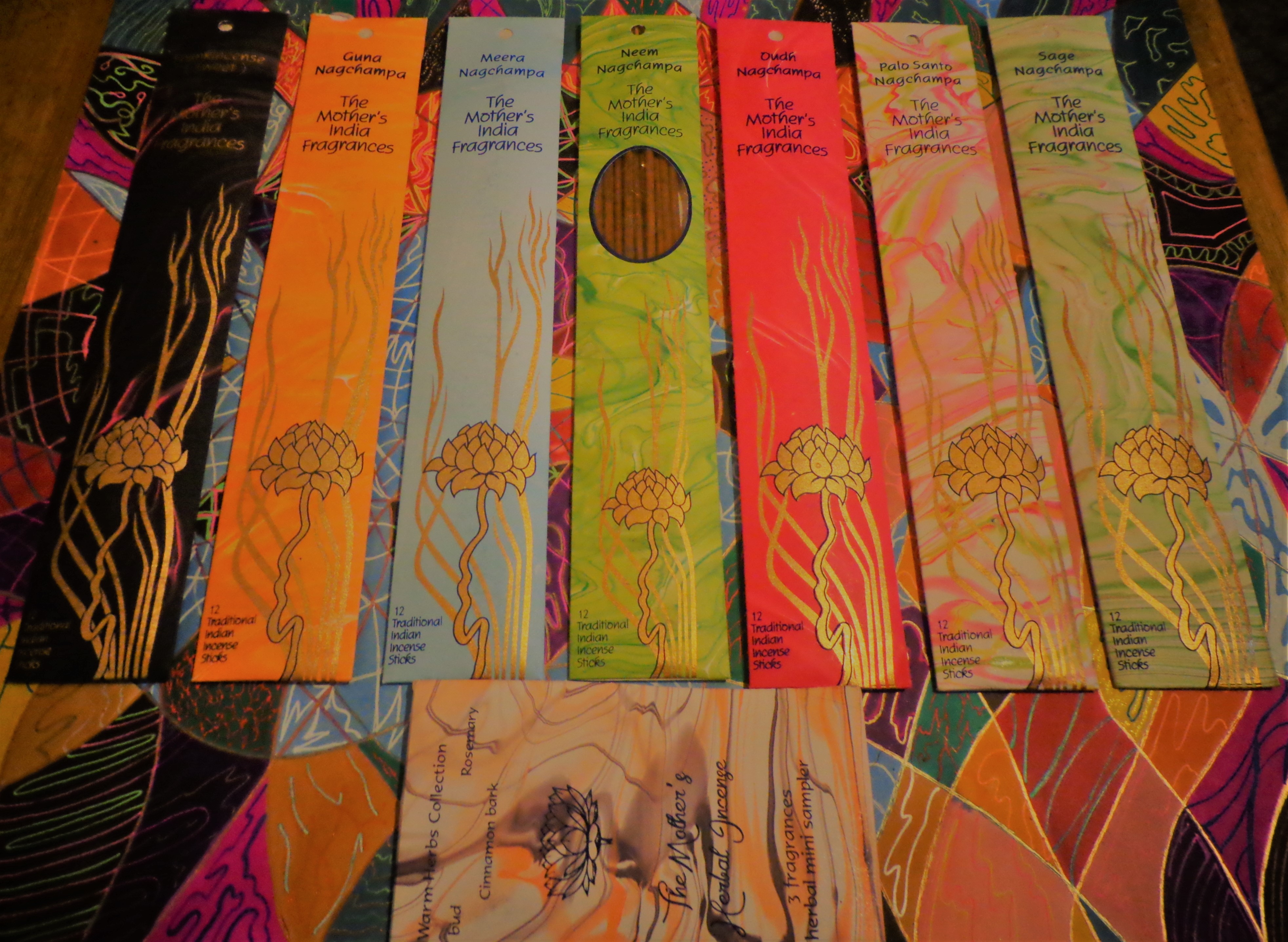 Please be sure to read Part 1 of this review as this is really a continuation of that review and that context is somewhat relateable to how I continue below. I will also note again here that all incenses in this range can be found at
Please be sure to read Part 1 of this review as this is really a continuation of that review and that context is somewhat relateable to how I continue below. I will also note again here that all incenses in this range can be found at  The issue with calling something an Oudh Nagchampa is different from a lot of other aromatics because oudh, of course, is an agarwood-based scent and oudhs can be stratospherically expensive, so one must lower one’s expectations for an incense that is only $3 for 12 sticks. We have certainly also had our expectations set by the Absolute Bliss/Happy Hari and Temple of Incense lines with sticks like Oud Masala and so forth that are still quite affordable while delivering very satisfying incenses with legitimate and surprisingly powerful oudh notes (although these are essentially 2-3 times as expensive if not more so). And so for me, I try to look at something like this new nag champa in the sense that does it live up to the name and if it doesn’t is it a good incense on its own? In terms of the former issue the oudh note isn’t the sort of rocketship it is in the previously mentioned lines, it does not sit about the champa base and dominate, it’s a much more subsumed and subtle scent. In fact it took me a bit less incense fatigue and a second stick to notice that it is actually in there as part of the mix.
The issue with calling something an Oudh Nagchampa is different from a lot of other aromatics because oudh, of course, is an agarwood-based scent and oudhs can be stratospherically expensive, so one must lower one’s expectations for an incense that is only $3 for 12 sticks. We have certainly also had our expectations set by the Absolute Bliss/Happy Hari and Temple of Incense lines with sticks like Oud Masala and so forth that are still quite affordable while delivering very satisfying incenses with legitimate and surprisingly powerful oudh notes (although these are essentially 2-3 times as expensive if not more so). And so for me, I try to look at something like this new nag champa in the sense that does it live up to the name and if it doesn’t is it a good incense on its own? In terms of the former issue the oudh note isn’t the sort of rocketship it is in the previously mentioned lines, it does not sit about the champa base and dominate, it’s a much more subsumed and subtle scent. In fact it took me a bit less incense fatigue and a second stick to notice that it is actually in there as part of the mix. The next two aromas, sort of like the Neem Nagchampa, strike me as pretty strange and experimental for a nag champa format as both palo santo and sage aren’t aromatics I think would match up well with a sweeter halmaddi sort of masala. The Palo Santo Nagchampa may then be the first of its ilk and it’s a very interesting match indeed. For one thing, the palo santo itself is quite good quality and very reminiscent of the finer wood itself, so it’s off to a good start on that front. The base seems to have some of the more chocolate and confectionary qualities of the Sweet Frankincense and Guna Nagchampa, although it’s certainly not quite as decadent as either. But it seems modified appropriately in order to actually make a palo santo nag champa and balance the Mother’s format against what is a very identifiable and unique woody aroma. Now you will either know or not know if palo santo is to your taste, but its surge in interest among lovers of Native and South American culture know that the aroma has made a significant dent in the new age markets with its popularity. I might caution one to try the wood out first rather than dive in here, but honestly the palo santo note here is completely legit and it is hard to imagine Mother’s could have done a better job with this one.
The next two aromas, sort of like the Neem Nagchampa, strike me as pretty strange and experimental for a nag champa format as both palo santo and sage aren’t aromatics I think would match up well with a sweeter halmaddi sort of masala. The Palo Santo Nagchampa may then be the first of its ilk and it’s a very interesting match indeed. For one thing, the palo santo itself is quite good quality and very reminiscent of the finer wood itself, so it’s off to a good start on that front. The base seems to have some of the more chocolate and confectionary qualities of the Sweet Frankincense and Guna Nagchampa, although it’s certainly not quite as decadent as either. But it seems modified appropriately in order to actually make a palo santo nag champa and balance the Mother’s format against what is a very identifiable and unique woody aroma. Now you will either know or not know if palo santo is to your taste, but its surge in interest among lovers of Native and South American culture know that the aroma has made a significant dent in the new age markets with its popularity. I might caution one to try the wood out first rather than dive in here, but honestly the palo santo note here is completely legit and it is hard to imagine Mother’s could have done a better job with this one. Sage, on the other hand, is a strange beast in that sage wrapped for smudging (or used in cooking) smells a lot different to my nose than oil distillations and then either one’s application to a masala can also end up varying in a whole lot of directions. Check out Stephen’s reviews of the Temple of Incense
Sage, on the other hand, is a strange beast in that sage wrapped for smudging (or used in cooking) smells a lot different to my nose than oil distillations and then either one’s application to a masala can also end up varying in a whole lot of directions. Check out Stephen’s reviews of the Temple of Incense 










 I bought
I bought  Be en Foret’s Lavender Kyphi (picture is just a sample container but cool enough to include – check out the final artwork at the link) is another one of her intriguing variations on the old Egyptian formula. Check out this amazing ingredient line up: “From the Garden: Salted lavender buds and Dominican Sage leaves from my garden, Spikenard root from the Himalayas, Violet leaf extract from France. Resins: Dark Frankincense, Tolu Balsam, Dark Benzoin, Labdanum, Kua Myrrh, Liquidambar, Peru Balsam. A dash of aged Ambergris in Sandalwood oil ● Bound with organic honey and raisins ● Rolled in Agarwood and Sandalwood powder.”
Be en Foret’s Lavender Kyphi (picture is just a sample container but cool enough to include – check out the final artwork at the link) is another one of her intriguing variations on the old Egyptian formula. Check out this amazing ingredient line up: “From the Garden: Salted lavender buds and Dominican Sage leaves from my garden, Spikenard root from the Himalayas, Violet leaf extract from France. Resins: Dark Frankincense, Tolu Balsam, Dark Benzoin, Labdanum, Kua Myrrh, Liquidambar, Peru Balsam. A dash of aged Ambergris in Sandalwood oil ● Bound with organic honey and raisins ● Rolled in Agarwood and Sandalwood powder.”  And if kyphis are a tradition going back to Egyptian times, Katlyn has made something of a vintage out of
And if kyphis are a tradition going back to Egyptian times, Katlyn has made something of a vintage out of
You must be logged in to post a comment.